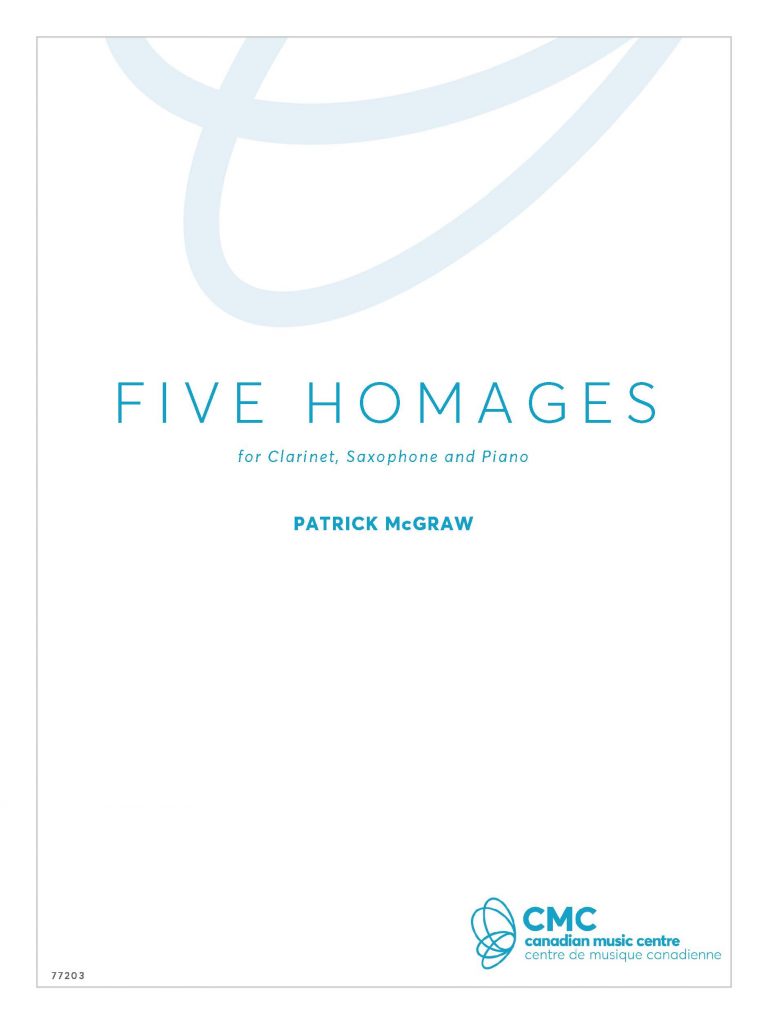Five Homages is a suite of five short movements paying playful but genuine tribute to several composers of the early-to-mid twentieth century whose work has influenced my own. It is scored for three performers: Bb clarinet, piano, and a saxophonist doubling on soprano, alto and tenor saxophones in different movements. The movements may be performed separately or together; two feature all three players while the remainder are solos or duets.
The fiery Prelude (for piano alone) recapitulates in one brief minute some of the evolution of Alexander Scriabin’s harmonic language across his career, but with rhythms suggestive of Bartók. Lonely Birds (soprano saxophone, clarinet and piano) recalls not only rhythmic and harmonic techniques of Olivier Messiaen, but also that composer’s love of bird song. The clarinet and saxophone play the roles of two birds which eventually join their voices in harmony along with the piano. Canusa Street (we stand on guard) (clarinet and piano) celebrates a peculiar quirk of the US-Canada border: the village of Beebe Plain is bisected by the Vermont-Quebec boundary, which is marked for several blocks by Canusa Street/Rue Canusa. The town’s post office dispenses Canadian and US stamps from opposite sides of the same counter and several other public buildings also straddle the frontier. Local legend blames a drunken border survey crew for the anomaly, evoked here with a raucous mash-up of Canadian and American tunes reminiscent of Charles Ives. Eine Kleine Gebrauchsmusik (alto saxophone and piano) is a tribute in miniature to the neoclassical sonata form of Paul Hindemith. The final movement, Finale: Quasi Marcia (clarinet, tenor saxophone and piano), puts into practice ideas from Vincent Persichetti’s influential book 20th Century Harmony, including “mirror writing” and multi-octave scales.

